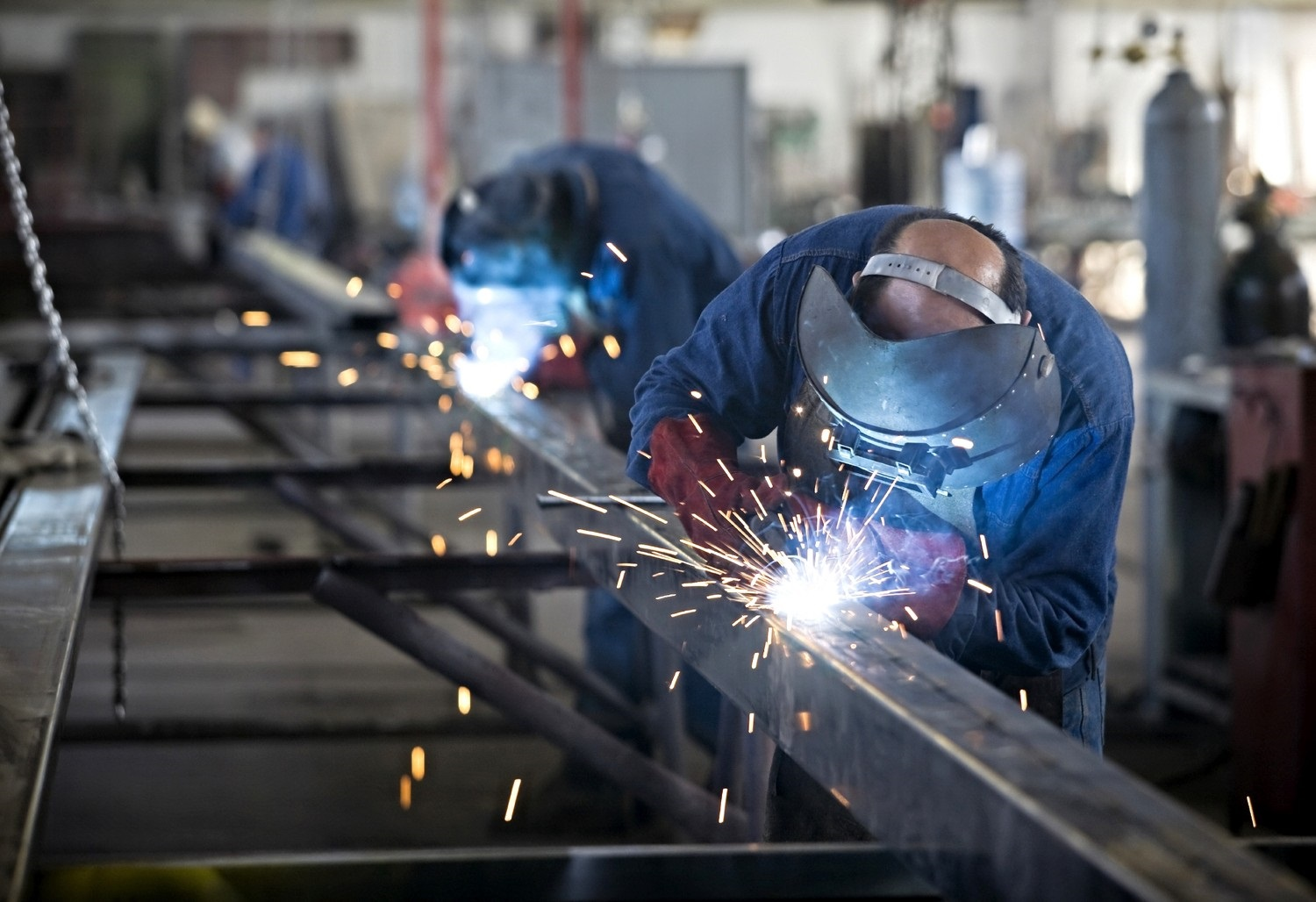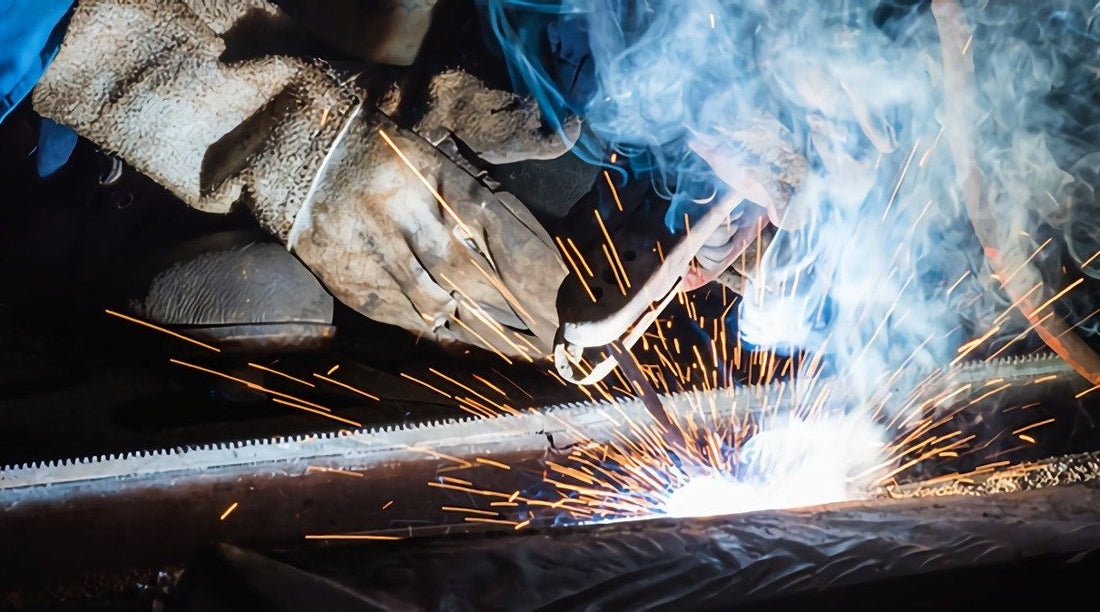Understanding cracking in welds and how Montana Mobile Welding and Repair Belgrade Welding prevents it
Typical Welding Repair Issues and Just How to Address Them Successfully
Welding repair work usually come across a variety of issues that can endanger the honesty of the end product. Usual issues include inadequate penetration, porosity, and imbalance, among others. Each flaw offers distinct challenges that require details strategies for resolution. Comprehending these issues is essential for welders aiming to improve their abilities and end results. This discussion will certainly explore these usual welding repair issues and reliable techniques to address them.
Inadequate Penetration
Insufficient penetration occurs when the weld metal falls short to completely fuse with the base product, resulting in weak joints and potential architectural failings. This concern often originates from insufficient heat input, wrong electrode angle, or incorrect welding speed. Welders may run into insufficient infiltration because of a mistake of the essential parameters for a particular product density or kind. In addition, contamination on the base material's surface can impede reliable bonding, exacerbating the trouble. To deal with insufficient penetration, welders must assure suitable settings on their devices and preserve a tidy work surface area. Regular assessment of welds is suggested to recognize any shortages early, enabling timely improvements and the avoidance of jeopardized architectural integrity in bonded assemblies.
Porosity
Porosity is an usual issue in welded joints that manifests as small gas bubbles trapped within the weld metal. This problem can endanger the honesty of the weld, bring about lowered stamina and prospective failing under stress. Montana Mobile Welding and Repair Belgrade Welding. Porosity usually emerges from contamination, wetness, or improper welding techniques, which enable gases to escape right into the molten weld swimming pool. To address porosity, welders should assure proper surface preparation, preserve a tidy workplace, and use appropriate welding criteria. In addition, picking the appropriate filler product and protecting gas can alleviate gas entrapment. Normal assessment and testing of welds can assist recognize porosity early, guaranteeing timely corrective activities are taken, consequently protecting the high quality and reliability of the bonded structure
Imbalance
Misalignment in welding can occur from numerous variables, consisting of inappropriate arrangement and thermal expansion. Comprehending the source is necessary for effective resolution. Several adjustment strategies are offered to realign parts and ensure structural stability.
Sources of Misalignment
Welding misalignment usually stems from a range of underlying problems that can jeopardize structural honesty. One main reason is improper fit-up of parts before welding, which can lead to spaces and irregular surfaces. Variations in thermal growth during the welding process can also lead to distortion, especially if the materials being joined have various coefficients of expansion. Additionally, inadequate clamping and fixturing may stop working to hold parts securely in position, causing motion during welding. Poorly maintained devices, consisting of welding makers and tools, may introduce inconsistencies in the weld bead, more adding to imbalance. Ultimately, operator error, stemming from insufficient training or experience, can also play a considerable duty in producing misaligned welds.
Modification Methods Available
Addressing imbalance effectively needs a mix of corrective strategies customized to the details issues handy. One usual method is the usage of fixtures or jigs to hold parts in the proper placement throughout welding, making sure regular alignment. In addition, preheating the materials can help reduce distortion and improve fit-up. For considerable imbalance, mechanical adjustment techniques, such as making use of hydraulic jacks or clamps, can be employed to deal with the setting prior to welding. Post-weld heat therapy may likewise be necessary to ease stress and anxieties triggered by imbalance. Careful evaluation and adjustment during the setup phase can prevent imbalance concerns from ending up being substantial problems, advertising a smoother welding procedure and enhancing overall architectural integrity.
Distortion
Distortion is a typical obstacle in welding that can occur from numerous variables, including irregular cooling and heating. Understanding the reasons of distortion is crucial for executing efficient avoidance strategies. Resolving this problem not only boosts structural honesty however likewise boosts the general top quality of the weld.
Root causes of Distortion
When subjected to the extreme warm of welding, products often go through changes that can bring about distortion. This sensation mainly arises from thermal development and tightening during the welding process. As the weld area warms up, the material increases; upon air conditioning, it contracts, which can create inner stresses. Furthermore, unequal heating throughout a work surface can exacerbate these stresses, leading to bending or bending. The sort of product likewise plays a blog here substantial role; metals with varying thermal conductivity and coefficients of growth may respond in different ways, bring about unpredictable distortions. Bad joint style and poor fixturing can contribute to misalignment throughout welding, raising the possibility of distortion. Comprehending these reasons is crucial for efficient welding repair work and avoidance approaches.
Prevention Techniques
Effective avoidance strategies for distortion during welding focus on controlling warm input and guaranteeing proper joint layout. Keeping a consistent warm input aids to reduce thermal development and contraction, which can cause distortion. Utilizing techniques such as preheating the work surface can additionally lower the temperature level gradient, advertising uniform why not check here heating. In addition, picking appropriate joint styles, such as T-joints or lap joints, can enhance security and reduce stress and anxiety focus. Executing appropriate fixturing to secure the work surfaces in area further aids in keeping alignment throughout the welding process. Lastly, staggered welding series can distribute heat extra equally, preventing local distortion. By using these approaches, welders can greatly lower the possibility of distortion and improve the total high quality of their welds.
Fracturing
Fracturing is a common concern encountered in welding repairs, usually resulting from different variables such as improper cooling rates, material option, or insufficient joint prep work. The incident of fractures can substantially endanger the integrity of the weld, causing prospective failures throughout procedure. To address this concern, welders should initially examine the source, ensuring that products work and appropriately selected for the particular application. Additionally, regulating the air conditioning rate throughout the welding procedure is vital; quick cooling can generate anxiety and bring about fracturing. Proper joint design and prep work also add to lessening the threat. Implementing these techniques can boost weld quality and sturdiness, inevitably lowering the probability of fracturing in ended up weldments.

Insufficient Blend
A significant concern in welding repair services is incomplete blend, which happens when the weld metal does not appropriately bond with the base material or previous weld passes - Welding. This flaw can bring about weak points in the joint, possibly jeopardizing the stability of the welded framework. Factors adding to insufficient combination consist of not enough heat input, inappropriate welding technique, and contamination of the surface areas being signed up with. To resolve this concern effectively, welders should ensure proper pre-weld cleaning and surface preparation, as well as adjust their welding criteria to accomplish appropriate infiltration and combination. Routine evaluation throughout the welding procedure can likewise help recognize incomplete blend early, permitting timely rehabilitative measures to enhance the general top quality of the weld
Overheating
While welding repairs can improve structural integrity, overheating provides a significant obstacle that can result in material deterioration. Extreme warmth throughout welding can modify the mechanical buildings of metals, leading to decreased strength, boosted brittleness, and warping. This phenomenon is specifically vital in high-stress applications where structural reliability is paramount. Identifying overheating can entail visual evaluations for discoloration or distortion, in addition to monitoring temperature during the welding process. To reduce the dangers linked with overheating, welders ought to utilize appropriate strategies, such as regulating heat input, readjusting traveling rate, and utilizing appropriate filler investigate this site materials. Additionally, applying pre- and post-weld warm therapies can assist restore product buildings and enhance the overall high quality of the repair service, making certain long-lasting efficiency and safety and security.
Frequently Asked Questions
What Are the Usual Indications of a Welding Problem?

Exactly How Can I Check My Welds for Top quality?
To examine welds for top quality, one can make use of visual evaluations, ultrasonic testing, and radiographic techniques. Each strategy assures architectural stability, recognizes issues, and verifies adherence to specified criteria, eventually improving the reliability of the welded joints.
What Safety and security Precautions Should I Take While Welding?
When welding, one must prioritize security by using ideal personal protective equipment, ensuring correct air flow, safeguarding flammable products away, keeping a tidy work space, and knowing surroundings to avoid injuries and accidents.
Can I Fix a Weld Without Remodeling the Entire Joint?
Repairing a weld without redoing the whole joint is possible, depending upon the damages (Montana Mobile Welding and Repair Fabrication). Techniques such as grinding, including filler product, or utilizing a welding procedure can successfully resolve certain problems while preserving the surrounding structure
What Tools Are Important for Efficient Welding Repairs?
Essential tools for reliable welding repairs consist of a welding equipment, wire brush, mill, protective gear, clamps, and filler materials. Each tool plays an important function in guaranteeing high quality and safety throughout the repair process. Porosity usually emerges from contamination, dampness, or incorrect welding strategies, which allow gases to leave into the molten weld swimming pool. Inadequately conserved tools, including welding devices and devices, may introduce inconsistencies in the weld bead, more adding to misalignment. When subjected to the intense warm of welding, materials typically go through adjustments that can lead to distortion. Breaking is a common problem come across in welding repairs, frequently resulting from different variables such as improper cooling rates, material selection, or poor joint prep work. A significant problem in welding repairs is insufficient fusion, which happens when the weld metal does not adequately bond with the base material or previous weld passes.